by Charles J. Hulin IV, October 2008
The moment of performance is a moment of autonomy. The performer is free and powerful. The performer cannot be silenced or contradicted in that moment. The performer is in control and knows his or her talents can change the world.
That moment of autonomy can amplify the voice of the otherwise powerless. It can provide real leverage against the oppressive powers that be. Thus, freedom of expression is of utmost importance in any society that truly values the individual.
The concept of the individual triumphs in the moment of performance.
But the individual is not alone in performance. Present in that moment of autonomy are mentors, tradition, human needs, and a captive audience. An ever-expanding community is linked to the moment of performance making it an act of faith.
Two artistic paths diverge at the moment of performance. One path seems to be the expression of power. Critiques of those whose work amounts to playing the loudest and fastest abound. Those with more depth or less physical ability might seek to bind their audiences as with a spell through manufactured emotion and drama. (I condemn myself here.) Either way, we give the audience an experience of power, but not necessarily a powerful experience. The freedom of the audience is compromised. The listeners are commanded to merge with the event, to cede their autonomy to the power of another. The performer has asked to be worshiped, not respected.
The other path is the path of beauty.
Beauty cooperates. Power competes.
Beauty invites participation. Power demands submission.
Beauty seeks to measure up to the laws of nature. Power asserts the self.
Beauty is absolute. Power is relative.
Beauty relates to the musicality of others.
Power tempts us to ignore musical principles.
Beauty exists in the community of composer, performer, and audience.
Power expresses the dominance of the performer.
Those calling for beauty speak to all sides in a conflict.
Those in power hear opposition in voices other than their own.
This litany makes it clear that what I mean by “beauty” includes the usual ideals of aesthetics and also converges with a paradigm that reaches far beyond the realm of art.
Traditionally, beauty has been considered a matter of proportion, of harmonious relation. On a much grander scale than my piano recital, proportion and harmonious relation exist as justice – the justice of all being cared for.
The word “shalom” used by Jews of the past and present, including Jesus, is the ultimate expression of this beauty. Shalom connotes completeness, safety, welfare, peace, and friendship with humanity and God.
We know that when the justice of all-being-cared-for falls by the wayside, war develops. Likewise, our power-focused performances might be indicative of the spirit of hostility that imbalances human endeavor at every level.
Shalom speaks to the meaning and use of power from the highest ranks of world government to our personal day-to-day ethical choices about the use of our own talents in performing and teaching.
Having power can tempt us to be unreasonable and to forget what it was like to serve or to have no power. Beauty, on the other hand, connects us with all the best parts of reality.
Perhaps my description of these two paths has been a little jarring. The path of power might seem integral to certain ways of pursuing music that are important to you. Maybe this definition of justice seems politically out-of-sync. Or, if you are like me, you have a long-term intermittent conflict with yourself about how to live and how to perform.
While my conflict resurfaces over the years, my belief in the importance of freedom, balance, and service remains the same. I have already addressed issues of freedom and balance. I believe service is the way to travel the better path.
Servants are really the ones who bring beauty into the world. Servants keep our surroundings clean and orderly, build warm homes, prepare good food, ease the woes of the infirm and their loved ones, and help us to see beauty in the world.
We are called to be servants, but we secretly worship leaders.
We overlook the indispensable function of service in society.
We seldom celebrate servants as the most important models that they are.
When we do serve, we do so as a tricky way of becoming leaders.
Truly seeking to serve moves the focus from our power to God’s power. Perhaps this is why it is of utmost importance that we learn to serve.
Focusing on God’s power should remind us that while we are each individuals, we stand side-by-side.
 In his book In the Name of Jesus, Henri Nouwen writes, “Somehow we have come to believe that good leadership requires a safe distance from those we are called to lead. Medicine, psychiatry, and social work all offer us models in which ‘service’ takes place in a one-way direction. Someone serves, someone else is being served, and be sure not to mix up the roles! But how can we lay down our lives for those with whom we are not even allowed to enter into a deep personal relationship? Laying down your life means making your own faith and doubt, hope and despair, joy and sadness, courage and fear available to others as ways of getting in touch with the Lord of Life.”
In his book In the Name of Jesus, Henri Nouwen writes, “Somehow we have come to believe that good leadership requires a safe distance from those we are called to lead. Medicine, psychiatry, and social work all offer us models in which ‘service’ takes place in a one-way direction. Someone serves, someone else is being served, and be sure not to mix up the roles! But how can we lay down our lives for those with whom we are not even allowed to enter into a deep personal relationship? Laying down your life means making your own faith and doubt, hope and despair, joy and sadness, courage and fear available to others as ways of getting in touch with the Lord of Life.”
Service described in this way is not a decision of an individual but a process much bigger than ourselves that draws us into community. Service is mutual. Forgetting this gives rise to resentment. Then much forgiveness is required to preserve the community.
Service that is a mutual, honest, side-by-side process bigger than ourselves illuminates love and obscures relationships built on power. In Nouwen’s final book, Adam, he explains what he learned from a handicapped young man named Adam who became Christ to him: “Adam clearly challenged us to trust that compassion, not competition, is the way to fulfill our human vocation.”
The Kingdom of God transforms the world at every level by those who lovingly create beauty through service. Our world is so power-focused that to be part of that transformation we need to be intentional in our search for beauty and vigilant in our commitment to service.
I invite you and myself to regularly ask “What was beautiful in this day?” That mindset will clarify our path. We will be blessed with the return of genuine musical feelings and we will find ourselves freed to focus on authentic musical values.
Then we must untiringly examine and reexamine the way we see our lives and work, the way we organize ourselves, and the way we achieve our goals so as to express ever truer ways of serving.


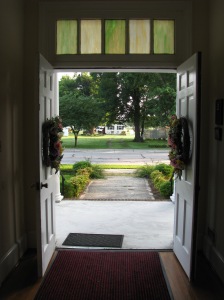
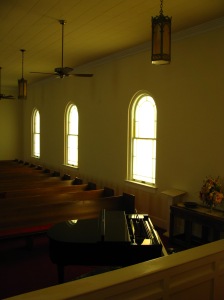
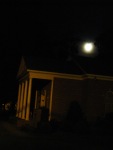

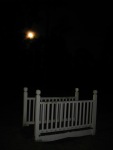
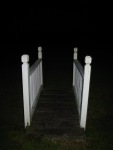

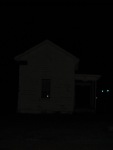

 by Charles Hulin
by Charles Hulin
